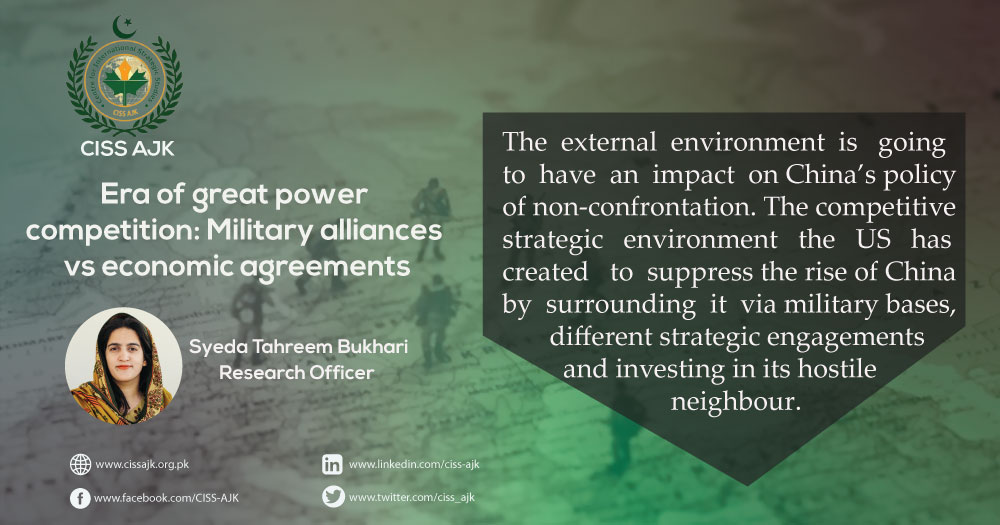791
THE Great Power Competition in 21st century is pivot to Asia where the US is countering China through military alliances expanding their military bases in the South China Sea. In this regard, under Enhanced Defence Cooperation Agreement (EDCA) the Philippines has given the US access to five military bases that was later expanded to nine. The location of three out of four new bases recently announced are in Island of Luzon, 250 miles away from Taiwan and one is in Palawan province in the South China Sea with the purpose to encircle China. China raised concerns over the US growing military presence endangering regional peace.
The US has also sent 200 troops to Taiwan to provide military training to Taiwan armed forces. It has also enhanced its military presence in the region through different strategic engagements such as QUAD and AUKUS. The US is advancing its interests vis-à-vis China indirectly through the gray zone. The US has followed the same pattern of military alliances throughout history. The NATO, SEATO and CENTO were also the military pacts to deter communism. The US expansion is based on military adventures as its defence industry became a defining feature of its economy.
Contrary to this, the rise of China is based on economic alliances. China is expanding its influence across the globe through trade agreements and investment. China is investing in Asia, Africa and Latin America via different infrastructure projects and trade agreements. China’s Belt & Road Initiative (BRI) is an effort to integrate the economies of the world through development of robust infrastructure. It aims at connecting Asia with Europe and Africa through a network of infrastructure projects that has been a major driver of investment in the region. To counter China’s BRI, the G-7 countries announced a global infrastructure initiative termed as Build Back Better World (B3W). Though B3W failed to make any major advancement owing to Covid-19 pandemic and the Russia-Ukraine war as no such developments are seen in Latin America, Asia, and Africa.
The external environment is going to have an impact on China’s policy of non-confrontation. The competitive strategic environment the US has created to suppress the rise of China by surrounding it via military bases, different strategic engagements and investing in its hostile neighbour. The rise of China won’t remain peaceful when its national interest will be at stake. In this case, the South China Sea and India will be the ground for proxy between the two great powers.
Moreover, the US cannot impose its will on the rest of the countries as in the Ukraine war it failed to bring other states on the same page in following sanctions imposed on Russia. Moreover, the US also miserably failed in Afghanistan even the Ukraine war also highlights the failure of security agreements and guarantees provided by the West. Contrary to this, China is the biggest trading partner of over 120 countries. In dragging other states in its competition with China, the US in the long run will lose the diplomatic support of other states. Not only due to their economic interests with China but also because of a shift in the strategic environment where the US is losing its stature as a reliable security guarantee.
—The writer is a Research Officer at the Centre for International Strategic Studies, AJK.



